#Can Vertical Jumping Increase Height
Text
Wet Beast Wednesday: emperor penguin
This is the last Wet Beast Wednesday before Christmas and Christmas is associated with the north pole thanks to Santa. So to celebrate the season, I'm going about as far away from the north pole as it is possible to go and talking about the emperor penguin. This also happens to be the first dinosaur I've showcased on this series.
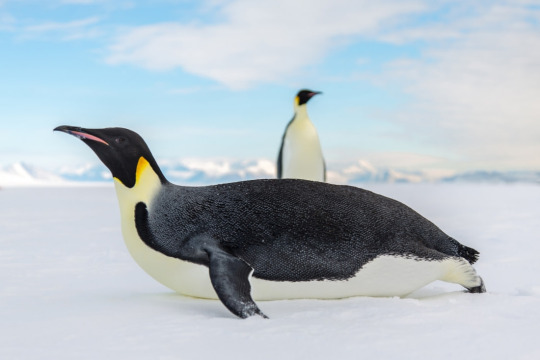
(image id: an emperor penguin lying belly-down on ice, seen from the side. Its back, wings, and head are black while its belly and neck are white. It has a patch of orange feathers near the ears. Another penguin is standing up in the background. end id)
Aptenodytes forsteri is the largest of all penguins and the sixth largest (by weight) bird in the world, only surpassed by the emu and two species each of the cassowary and ostrich. Those are all paleognaths, one of two living groups of birds, making the emperor penguin the largest of the other group: the neognaths. There are some discrepancies on their size due to the standards of bird measurement, but recent measurements list their standing height as reaching 120 cm (3.9 ft) with a weight of 22.7 to 45.4 kg (50 to 100 lbs). Their weight varies a lot during their lives, with both males and females losing a lot of weight during breeding season. Males generally weigh more than females. Genomic and anatomical analysis indicates that the emperor penguin, along with the closely-related king penguin and an extinct species, are part of a group of penguins that branched off of the family tree before the other living penguin species. As with other penguin species, they are heavily adapted for life in the water. All penguins are flightless, with their wings having adapted into flippers used for swimming. Penguins stand differently than other birds. Most birds have long legs and hold their bodies horizontally to the ground or at an angle, but penguins have short legs and hold their bodies vertically, like humans do. This, plus other adaptations, helps streamline the birds, letting them swim more efficiently. Like other seabirds, their feathers are very dense and coated with oil that repels water. This keeps the feathers from becoming waterlogged, reducing drag and helping keep the bird warm. During molting season, the feathers emerge from the skin mostly formed and push out the old feathers, preventing the penguin from developing bald or thin patched that would compromise insulation. While the feathers are responsible for most of the insulation, a layer of fat also helps. Like other birds, penguins are endothermic, commonly known as warm-blooded. Penguin tongues have backward-pointing barbs that help prevent food from escaping their mouths.

(image id: an emperor penguin jumping out of the water and onto ice. It is pictured in midair with its body roughly parallel to the ground and wings extended. Multiple other penguins are in the background. end id)
Emperor penguin's divide their year between the breeding season and the rest of their lives. During most of the year, they spend their time searching for food. Most of this food consists of fish, krill, and squid. Emperor penguins are social animals that often coordinate with each other to hunt in groups. While hunting, they will dive up to 535 meters (1,755 ft) and spend up to 21 minutes underwater before surfacing to breathe. During dives, the pressure can increase up to 40 times and the emperor penguin has some special adaptations to cope. Unlike most birds, emperor penguin bones are solid, reducing the chance of one breaking under pressure. During dives, the heartbeat slows dramatically and non-essential organs cease functioning to conserve oxygen in the blood. In addition, the hemoglobin in the red blood cells is modified to carry more oxygen in high pressure and low temperature. While on land, emperor penguins gather in colonies along the shoreline. Members of the colonies spend a lot of them time huddled against each other to keep warm. The penguins live all around Antarctica between 66 and 77 degrees southern latitude.
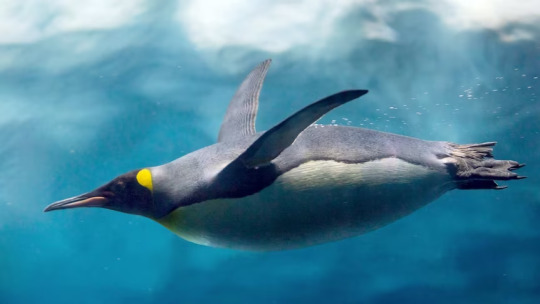
(image: an emperor penguin swimming underwater. Its head is pointed up, making its body very streamlines. Its wings are extended and are used for propulsion and steering. end id)
The thing emperor penguins are most famous for is their breeding behavior. Breeding season starts at the beginning of winter in Antarctica, between March and April, and is triggered by the decrease in day length. Penguin colonies travel inland en masse moving between 50 and 120 km (31 to 75 miles) to find a spot to raise their chicks. These spots are usually large, flat patches of sea or lake ice with a barrier such as a cliff or iceberg used to block the wind. Males perform sexual displays wherein they make loud courtship calls while wandering around the colony. When a female is interested, she will face they male and they will both hold their heads up for a few minutes. Once a pair os formed, they will walk around the colony together. When ready to mate, The pair will bow to each other. Emperor penguins are serially monogamous. They will only mate with one other penguin each season, but rarely pick the same mate more than once. The pair say together until the egg is laid in late May or early June. The female then transfers the egg (only one is laid every year) to the male, a tricky process. They have to use their feet to transfer the egg without dropping it. If the egg breaks or is exposed to the ice for more than a minute or so, it will die. It is not uncommon for an egg to be lost, especially in first-time parents. If this happens, both parents will leave the colony and return to the sea, not mating again until next year. The male balances the egg on his feet and covers it with a loose flap of skin. The bottom of this skin is a featherless patch called the brood patch that only forms during this season. By keeping the egg between his feet and the brood patch, the male incubates it. Once the egg is transferred, the female returns to the sea, leaving the male responsible for the next few months. In every other penguin species, the mother and father take turns incubating their egg. for the next 65-75 days, the male will incubate the egg in the middle of the Antarctic winter, where storms are frequent and temperatures can can reach into the -60s C (-70s F). He will not eat at all during this period, which, including travel and mating time, can last for 120 days. Males can lose up to half of their body mass during this fast. If the egg is dropped even once, it has a very high chance of dying. Walking without dropping the egg is tricky, but the males will form tight bunches to conserve body heat. These bunches are mobile, with members to the outside gradually moving inward and vice-versa. The egg usually hatches after around 60 days and it can take a few days to break out of its shell, which is thicker than in most bird species. The chicks are born featherless and will freeze to death if they leave the male's brood pouch. The male produces a substance called crop milk with a gland in his esophagus. Crop milk is unique to pigeons, flamingos, and male emperor penguins and is used to feed the chick. The crop milk does not provide full nourishment to the chick, but will keep it alive for about a week.
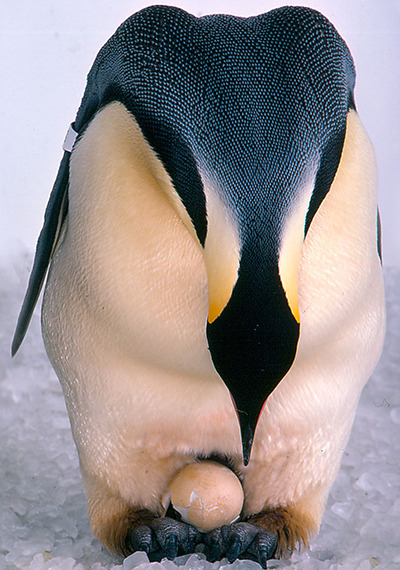
(image id: a male emperor penguin standing on ice with its egg balanced on its feet. The skin flap thet normally covers the egg is pulled back and the male is bending over to examine the egg. This egg is broken, possibly the result of being dropped, and is non-viable. end id)

(image id: a newly-hatched emperor penguin sitting on it's father's feet. It is very small and featherless, with grey skin and a black head. end id)
About this time, the female will return from her time at sea. She spent this time feeding and fattening herself up for the next leg of the parenting journey. She returns to the colony usually between 5 and 10 days after the hatching. If she arrives too late, the chick will starve. Once she arrives, she will locate her mate through the sound of his calls. The male then transfers the chick to the female's brood pouch and returns to the sea to feed and put weight on for another 3-4 weeks. The female will feed the chick by regurgitating half-digested food into its mouth. After this, the mother and father will take turns brooding the chick and feeding at sea. If either parent is delayed or dies, the chick will die as the remaining parent will eventually abandon it and return to sea. Orphaned chicks will try to seek food and shelter from other adults and mothers who have lost a chick may try to adopt an abandoned one, but as a single parent cannot raise a chick alone, it will eventually be abandoned as the adult goes to feed. Sometimes, a mother who lost her chick will attempt to steal a chick from another mother. This leads to fights over chicks that may leave chick trampled to death.
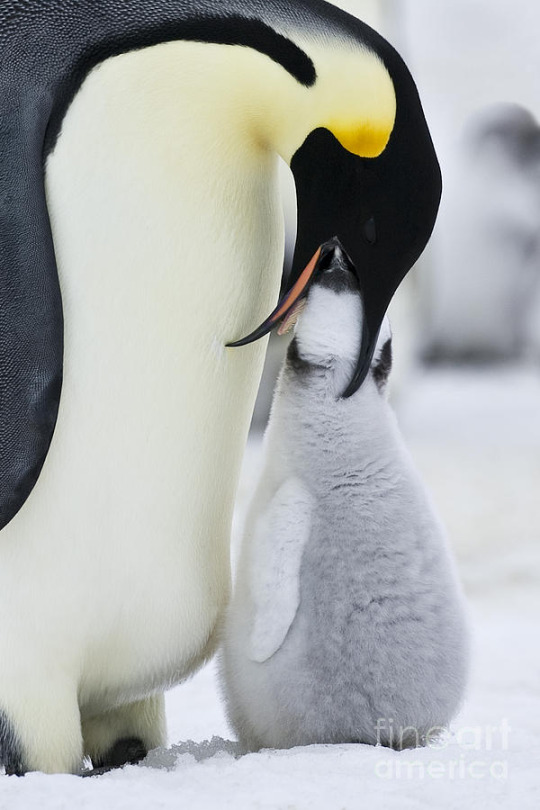
(image id: an adult emperor penguin feeding its chick. The chick is larger and covered in fluffy, grey, downy feathers. It no longer needs to stay on its parent's feet. The adult is looking down at the chick with its mouth open. The chick has its head inside the adult's mouth. end id)
Starting 45-50 days after hatching, the chicks now have a thick enough coat of down to survive outside of the brood pouch. Starting around this time, both parents will return to the sea and occasionally return to bring food, using the sound of their chick's vocalizations to track them down. When the parents are gone, the chick huddle together for warmth. Starting in early November, the chicks will start gaining their adult plumage and the adults will stop returning to feed them. Once they get hungry enough, the chicks will make the trip to the sea (which is shorter now as it is summer in the Antarctic and the sea ice has receded) and will be independent from now on. Only 15% of chicks survive their first year, but after that the survival rate is 95%, meaning most living emperor penguins are adults. Emperor penguins reach sexual maturity at 3 years, but most do not mate until they are 4-6 years old. The average lifespan of those who live long enough to reach adulthood is 20 years, but may live up to 50 years. The high survival rate of adults is in part due to a lack of predators. Adult emperor penguins are only hunted by leopard seals and orcas, though the former prefer juveniles. Juveniles are preyed upon by seals when they reach the water and by southern great petrels when on the ice. Adult emperor penguins lack any land predators, which has resulted in them having no prey response when on land. Scientists and antarctic explorers have reported that adults will approach them without fear.
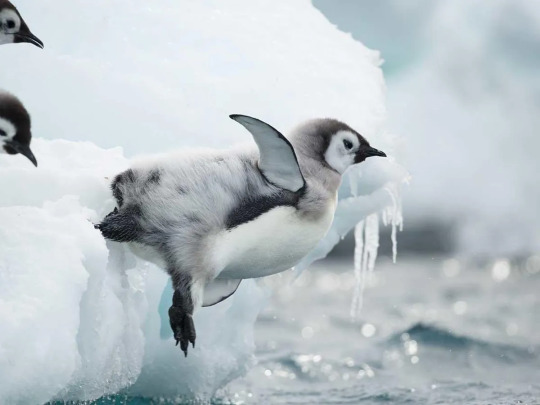
(image id: a newly-independent chick entering the water for the first time. It has not yet fully developed its adult plumage and has a mix of the chick's fluffy down and an adult's smoother coat. It is jumping off a ledge of ice into the water. Two other chicks watch from the side of the image. end id)
Emperor penguins are classified as near threatened by the IUCN, meaning they are losing population and may slip down into threatened status if conservation measures are not taken. The largest threat to emperor penguins is global warming reducing their habitat. Because they need sea ice to lay eggs and brood, the loss of sea ice every year has reduced the ability of the penguins to reproduce. in 2022, loss of sea ice led to a catastrophic failure to reproduce among nearly all known colonies. It is now estimated that 90% of colonies are at risk of dying out due to the loss of sea ice. If these trends are not reverted by reduction of global warming, the penguins could face extinction.

(Image id: two emperor penguins with their chick. The adults are standing behind the chick, which has its downy juvenile plumage. The chick stands about half the height of the parents. end id)
#wet beast wednesday#emperor penguin#penguin#marine biology#biology#zoology#ecology#animal facts#marine life#good parenting#cute#image description
116 notes
·
View notes
Text
AMuS: Why is Ferrari losing so much?
I translated this article below as I have seen excerpts floating around so here is the full thing.
The loss in Quali in Spa has to make Ferrari think. Red Bull arrived in top form after summer break and left Ferrari behind by 6 tenths. Now explanations are needed. There are many theories but which are true?
In the first 13 races of the season Red Bull and Ferrari were head to head. "On average we are separated by a tenth. Depending on form on the day and circumstances it's sometimes us and other times Red Bull that are faster" analyses Ferrari TP Mattia Binotto the first half of the season. And even if it went really bad for someone there were only 3 tenths between the two championship contenders.
It has never been 6 tenths. And you always had the feeling throughout the entire weekend in Spa that Max Verstappen had more in hand than the 0.632 seconds that separated the Dutchman from Carlos Sainz. Even though Carlos got a tow off of Leclerc. Verstappen and Red Bull didn't need that help.
Red Bull were 10 km/h faster in top speed with out a tow. Regardless, Verstappen dominated the Ferrari sector in the middle of the track. The championship leader gained 0.328 on Leclerc and 0.357 on Sainz in those 10 corners. Even though Ferrari ran the higher downforce rear wing.
How much influence does the Bouncing TD have
On Sunday we are getting Red Bull vs Ferrari twice. At the top of the grid Carlos Sainz vs Sergio Perez and in row 8 Max Verstappen vs Charles Leclerc.
Ferrari hope that they made the right gamble with higher downforce. Red Bull had issues with tyre deg on Friday that were improved my Saturday but that could get worse again with the higher temperatures on Sunday.
This already leads us to the analysis as to why Ferrari was with left without a chance for the first time this season. The first suspicion: The TD about bouncing is implemented in Spa for the first time and that slowed Ferrari down. Ahead of the weekend there was speculation that Ferrari would either have to increase their ride height or set the car up stuffer to stay within the FIA threshold in wear on the plank and vertical oscillations.
Red Bull not using the super light chassis
Actually, Ferrari were more affected by bouncing in the height speed areas than Red Bull. And they are also running a stiffer suspension than usual which causes that it was harder to get the tyre into the right window.
Leclerc was complaining on the Radio that his car was jumping up and down too much in the slow corners. Opposite of how the F1-75 usually behave where is was the car with the most amount of spring deflection and the best mechanical grip.
Ferrari is saying that these theories are unfounded. Spa is just a race track that fits RB. The RB18 is the more efficient car, generates more downforce underneath the car and can therefore run with smaller wings.
Only Verstappen is dancing out of line (idk how to translate that saying)
And the upgrades didn't change that. Ferrari new wings, Red Bull modified sidepods and so on. The weight of the car didn't change. RB haven't used their light weight chassis yet that should bring around 2-3 tenths.
Ferrari pointed at the fact that only the gap to Verstappen was "abnormal". And the champion drove as if he was form a different planet on his home track. In comparison to Perez they say they are in the normal range. And maybe the race with show the abnormal difference. As Ferrari realised that they can't beat Verstappen on one lap they put all their money on tyre saving to be able to win with that trump card on Sunday.
This is a quick translation pls don't come for me if I made mistakes
10 notes
·
View notes
Text
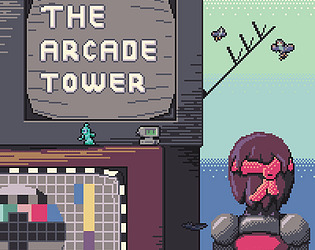
#JakeReviewsItch
The Arcade Tower
by Ungamed Studios, Aurpheus
Price (US): $2.99
Included In: Bundle for Ukraine, Indie Bundle for Abortion Funds
Genre: Puzzle, Adventure, Platformer
Pitch: Jump, double-jump, punch, shoot, and think your way through side-scrolling puzzles and combat.
My expectations: Despite having "arcade" in the title, this looks like an old PC platformer. For whatever reason, the screenshots are making me think of, like, Secret Agent and The Amazing Spider-man, and I wouldn't be at all disappointed if those comparisons are right.
Review:
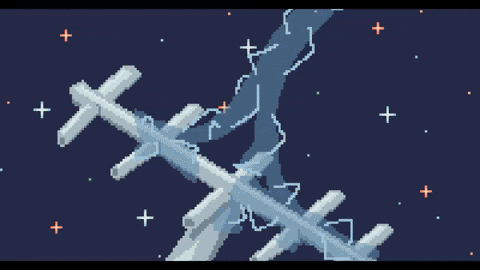
The Arcade Tower is a peculiar title. There’s a lot of vertical movement, but there’s significantly more horizontal traversal. Greater width than height does not a tower make.
“Arcade” is a word with several definitions. In a video game’s title, it’s usually safe to assume it’s an abbreviation for “video arcade,” implying the game in question has some similarity to games found therein. Video arcades, and penny arcades before them, take their name from the architecture, where an arcade is a long, arched building or gallery”—a structure that is distinctly not a tower.
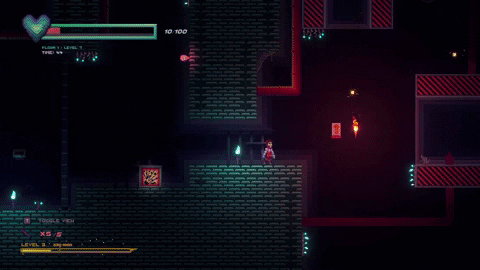
Anyway, The Arcade Tower is a puzzle-platformer with a pinch of action RPG. Hit a switch to open a door. Jump across narrow platforms over lava and spikes before the door closes. Kick a monster. That kind of stuff.
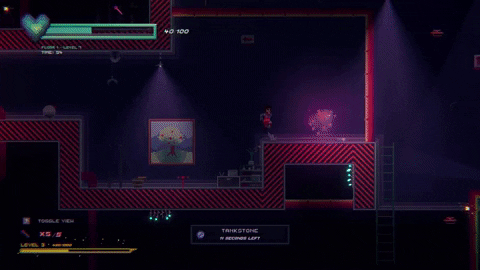
Progression usually depends on correctly using power-ups that, for example, flip gravity or increase movement speed. These power-ups can be activated as many times as needed, but only from set spots, and they last a limited time. Puzzles, right?
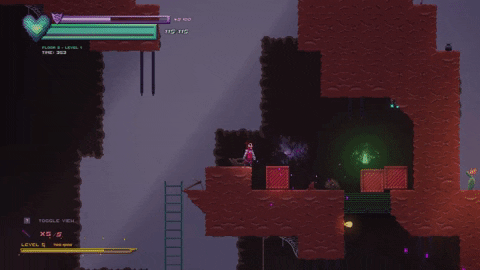
Fighting is super basic, but it’s made tolerable by the experience points earned for each enemy defeated.
That’s the game, really: Unremarkable, but not a bad time.
+ There are coins scattered throughout the levels, like you'd expect from a platformer. While coins usually mean extra lives and points, which don't mean anything in a modern game, these are XP coins. Leveling up means permanent attack and health bonuses. Coins have a purpose!
+ Fast, smooth movement.
+ Some tricky observation puzzles.
+ A button to zoom out at any time—simple and incredibly useful.
– Sloppy, tedious combat.
– Shaky collision detection. It shouldn't be this hard to hit a lever.
– Aesthetically and thematically uninteresting.
– Repetitive level design.
🧡🧡🧡🤍🤍
Bottom Line: I'd never considered mixing a puzzle platformer with an action RPG. It's an intriguing idea. Unfortunately, The Arcade Tower doesn't pull off either half especially well. But it's not bad, either.
A respectable effort, and one I generally enjoyed, but nothing I would recommend to others.
#JakeReviewsItch is a series of daily game reviews. You can learn more here. You can also browse past reviews...
• By name
• By rating
• By genre
#The Arcade Tower#Ungamed Studios#Aurpheus#Puzzle Platformer#JakeReviewsItch#Computer Game#Video Game#Indie Game#Game Review#Itch.io
2 notes
·
View notes
Text
Different types of sidescroller backgrounds
I decided pretty early on that I wanted my game to be a sidescroller so I discussed this with Chris
Parallax - Parallax scrolling is when the background is moving at different speeds depending on hoe far away it is from the foreground of the image (as seen in the video below). This can be achieved in many different ways such as layering, this technique only works in systems that support multiple background layers that can be scrolled independently in horizontal and vertical directions and composited on one another, simulating a multiplane camera. On such a display system, a game can produce parallax by simply changing each layer's position by a different amount in the same direction. Layers that move more quickly are perceived to be closer to the virtual camera. Layers can be placed in front of the playfield the layer containing the objects with which the player interacts for various reasons such as to provide increased dimension, obscure some of the action of the game, or distract the player.
youtube
Platformer - A platformer game is essentially Super Mario Bros and that sort of game, in order to be a platformer game the player must navigate through an environment to get from points A to B by going in one continuous direction, and must consist of uneven terrain and suspended platforms of varying height that require jumping and climbing to traverse. Other actions might be needed to cmpleate the game and travel to different platforms such as using vines or grappling hooks, jumping off walls, air dashing, gliding through the air, being shot from cannons, or bouncing from springboards or trampolines.
2.5 D - 2.5D was first created by the game company SEGA and are essentially a mash between a 2D sidescrolling game that has 3D elements to it, most 2.5D game use a 2D sprite/character and combine it with a 3D environment. 2.4D game can also have a different perspective to a normal sidescroller, for example, a game may be played from an isometric perspective (seeing a 3D object in 2D), which is also referred to as axonometric perspective (same thing but with parallel lines), will use 2D objects that will present as 3D. The isometric viewpoint gives the illusion that the game is 3D when it isn't.
Scrolling - A side scroller is a type of video game where a side view camera angle is used for action viewing. Side scrollers are generally in 2D with game characters that move from the left to the right side of a screen. Some side scrollers require users to move in one continuous direction, most of the time its done from left to right because that's the way that the English read.
Scrolling game doesn't just have to be a side scroller it can also be a vertical scroller such as Commando or even a Multidirectional scroller like Fortnite.
2 notes
·
View notes
Text

Name: Kas
Nickname: Kas
Alias: The King of Darkness, The Betrayer
Birthday: March 27, 1986
Age: Immortal
Sexuality: Bisexual
Location: Hawkins, Indiana
Species: Vampire
Powers: Listed Below
Occupation: Leader of Corroded Coffin, Leader of the Hellfire Club, King of the new world
Height: 5′10″
Weight: 163 lbs
Eye Color: Brown / Red
Hair color: Dark Brown
Piercings: Ears
Tattoos: A few
Scars: A few
Faceclaim: Joseph Quinn

Biography
March 27, 1986 Eddie Munson had died, had sacrificed his life for a town that hated him. His body was left abandon in the upside down, almost as if he was after thought. Didn’t think about returning his body to his uncle, who had to be worried about him. March 27, 1986 minutes before the clock striked midnight, Kas was born.
Personality
Kas is still much like Eddie, still a full-on nonconformist metalhead. Who has an eccentric personality and has a passion for music, as well as Dungeons & Dragons. Still quick to get frustrated and irritated but Kas is so much worse, he’s more vengeful when it comes to those who wronged him. Only loyal to a select few.
Powers
Vampirism - Vampires have sharp, pointed, retractable fangs that extend beyond their human teeth. Vampires are said to mainly bite the victim's neck, extracting the blood from a main artery.
Superhuman Strength - The superior physical strength of a vampire compared to that of a human is a prominent theme. Vampires possess strength equivalent to that of 100 or more strong men, sufficient to single-handedly lift heavy boulders with ease. Newborn vampires generally have the advantage of superior strength when in direct physical combat with a human; they can single-handedly lift a grown man off the ground and throw him across a room with enough speed and force to send him through a wall or across an alley, they can also knock them unconscious with a single chop, snap their necks with one hand, and crush their bones, all with little to no effort. Their strength increases to a degree as they age; older vampires of a significant age are stronger than younger, weaker vampires.
Superhuman Speed - Vampires are extremely quick, moving faster than the human eye can possibly see. They can run in excess speeds and in their human form out run many beings such as ghosts and demons, they're significantly faster than a human werewolf and slightly faster than a turned one thanks to their stature. The creature’s sheer speed, combined with its unnatural stealth, makes it impossible for the vampire’s prey to detect or escape from the vampire until it is too late. Vampires are able to dodge bullets, and react with unnatural quickness to any threat, due to the creature’s superhuman reflexes. In order to attain more speed, a vampire can take the form of bats.
Superhuman Stamina - Vampires are able to move at great speed for long periods, and it is nearly impossible to tire the vampire, due to its preternatural degree of endurance. They do not need to sleep and do not require food or oxygen. It means that drowning would never kill a vampire.
Superhuman Agility - Vampires possess supernatural agility, they can nimble enough to scale sheer surfaces with amazing speed, vertically or horizontally, much like a spider. This ability would allow them to access places that would be otherwise impossible for a human to reach. They can jump further than any normal human, such as from roof top to roof top or building to building. They are so agile as to dodge a bullet from the distance of only a few feet.
Superhuman Durability - Vampires are incapable of being slain by most forms of conventional injury, including firearms, blades or lesser spells. Furthermore, the vampire cannot feel the pain that would result from such attacks. Gunfire has no effect on the immortal whatsoever, serving only to slow the creature down. Likewise, blades don’t affect the vampire at all, unless a silver blade pierces the heart or removes the head. Vampires also are immune to cold and poison and frost spells do no damage to them. Vampires heal instantly when blood is present otherwise they heal slowly. that they have been dubbed to be immune to mundane weapons.
Superhuman Senses - Vampire’s senses of sight, smell, hearing, and touch are of supernatural keenness, comparable on many levels to a bat’s. The vampire can see with perfect clarity in the darkness of the night, to the point of being able to detect the bodily heat emanations from its victims. The creature’s hearing is comparable to a bat or an owl, possessing a level of sensitivity on par with the bat’s own echo-sensitivity and they even have a sonar system just in case they are blinded. The Vampire’s sense of smell is as acute as that of a wolf or a dog’s, enabling the creature to track its prey for miles by the scent of the victim’s blood alone, a sensation that the vampire relishes. The Vampire is also able to tell individual people apart by the scent of their blood coursing through their veins or bodily odors. The Vampire’s sense of touch is amazingly acute, as the creature can feel the heartbeat of a potential victim through thick walls, or it can detect the vibrations of a vampire hunter’s footsteps and the direction of the footsteps, enabling the Vampire to either escape or prepare an ambush for the would-be hunter. In addition to its five senses, the vampire possesses several preternatural senses. The Vampire can instinctively sense impending danger, usually posed by humans. Vampires can feel the heartbeat of a person and see the blood and brain activity, allowing them to save lives of people. Vampires require a very little amount of blood to tell the age, race, gender, blood type, health status and eating habits.
Scaling Walls - Vampires can scale walls like spiders and still act like they were walking on the ground with their capes and clothes falling towards their feet instead of the soil. They can detach at will to land on the ground and carry on their work from there.
Hypnosis - Through the use of hypnosis, Vampires are able to dominate the mind and will of a human by simple eye contact, soft speech or a simple wave of the hand. The Vampire’s bite seems to have an anesthetic effect on the victim; giving the creature the time it needs to feed and also instantly sealing the cut to prevent loss of blood and keeping no memory of it. To dominate a human, the vampire needs only make eye contact with its victim for a few seconds and then bite to spread vampirism. However, the stronger the human’s will, the longer hypnosis takes. If necessary, the Vampire can completely crush the human mind or destroy the individual’s sanity, leaving little more than a drooling lunatic. In the same manner, the Vampire can create a human slave. This slave is totally obedient to his master’s will, to the point of being willing to sacrifice everything for his master’s safety, including his or her life. Such individuals inevitably lose their minds due to the vampire’s power over them.
Immortality - A vampire being already dead cannot die again. Their lifespan multiplies very fast rendering them immortal in life and their immunity to mundane weapons and instant healing renders them invulnerable to most weapons and their part dead bodies can make others mistake for them as dead men when they fall on the ground. The oldest vampires are between 1,000 and 10,000+ years old.
Shapeshifting - Vampires can fly as a cloud of bats, mist or a single giant or small bat. Vampires can take the form of rats, bats, mist or smoke in cloud form (whole body or occasionally part of their body) or a single giant or regular bat, wolf (or a werewolf-looking creature), giant or regular rat or a bat-like demon. Some can even turn their hands. Vampires can call upon bats to do their will and can transform into a swarm of bats at will. Their clothing and anything they hold, like swords, etc. also dematerializes into bats with them. This enables them to fly. Bat powers give vampires a lot of new qualities like the ability to move very fast, turn invisible for some time, and actually fly. Elder vampires can also turn into one single bat to remain stealthier and others can turn to giant bat-like demons. Vampires are known to embalm mortals into themselves to carry them as bats too.
Healing Factor - The vampire has supernatural regenerative capabilities, which allows the creature to recover from injuries that would permanently incapacitate or even kill a human. Poison, suffocation, extreme cold, aging, drowning, or disease cannot kill the vampire, as the creature is already dead.
True Face - A vampire's true face is the appearance they are hiding under their normal human face. When a vampire's true face is revealed, the sclera of their eyes turns blood-red, dark veins appear under their eyes as the blood pumps forcefully through them, and their canine teeth extend into razor-sharp fangs. On some occasions, a vampire's fang teeth can include both their canines and their lateral incisors, or both their canines and their premolars. A vampire's true face can be revealed whenever they wish, but it will appear against their will whenever they are aroused by the scent of blood, or are feeling intense emotions such as fear, anger, lust, sadness, etc. A vampire's fangs are extremely sharp, which gives them the ability to tear into almost any substance (including and especially flesh) and tear off limbs. A vampire's true face will appear for the first time either while they drink human blood for the first time or shortly afterward. With the fangs come the darkened veins under the eyes as well.
Telepathy - Vampires can read the minds of mortals. Older vampires can read the minds of younger, weaker vampires. Vampires can also use telepathy to "whisper" to each other by speaking into each other's minds; a way to silently communicate even over great distances.
Telekinesis - Vampires can move objects with their minds. Most of them are known to choke people without their hands and even lift people; vampires even go a step further to pull or push objects away and some like throwing their blades towards enemies and then calling them back.
Flight - The unique ability known to older vampires to defy gravity and move towards anywhere in the air. Newborn vampires have a lesser variation of this power; they can land silently and carefully by floating down to the ground during falls.
Dream Manipulation - Vampires can mentally create and control dreams of both humans and weaker vampires. It is easier to get into a vampire's head if they don’t drink human blood or convince humans to become a vampire.
Blood Bond - A blood exchange between a vampire and human (not before the human dies) will form a blood bond. The vampire will be able to sense the human's thoughts and emotions, knowing if that human is in any type of harm or distress - for eternity. The human will also experience sexual dreams about that vampire.
Weakness
Silver - The touch of silver burns a vampire's skin and causes great pain.
Garlic - Vampires are repulsed by the scent and taste of garlic.
Religious Iconography - The sight of a cross or any other religious symbol will repel vampires and even burn them on contact with their skin. By holding some form of crucifix in front of a vampire, a potential victim can cause the vampire to halt, or even to turn and flee. A cross presented strongly enough can even cause a vampire to be unable to return to their coffin, destroying them at sunrise. Direct physical contact with a crucifix will severely burn a vampire, but will not destroy them.
Dead Man's Blood - The use of blood from the recently deceased can also be used as a method to incapacitate vampires briefly.
Stake - Wound to the heart was fatal to a vampire. An iron stake can knock a hole in the vampire and weaken it to some point while a normal wooden stake a silver, ash, hawthorn, or oak stake can kill a vampire when dug into the heart.
3 notes
·
View notes
Text

Please note: This section will be updated from time to time. Additionally, please note that some of his biography might be intertwined with my own head canons.
Name: Edward Charles Allan “Eddie” Brock / Venom (MCU)
Derivatives: Eddie, Ed
Known Aliases: Venom, Lethal Protector
Species: Human / Symbiote
Birthdate: September 15, 1987
Zodiac Sign: Virgo
Sexual Orientation: Bisexual
Title: Journalist/Venom's Human Host, Former Investigative Reporter
Affiliations: Dark Avengers, Daily Globe, The Eddie Brock Report.
POWERS (AS VENOM)
Symbiotic Enhancement/Symbiotic Black Suit: Eddie has several superhuman attributes as a result of his association with the Venom symbiote, which covers his body in black biomass. This increases Eddie's abilities, such as strength, durability, speed, agility and healing at superhuman levels. In addition, he can also use the symbiote as a weapon while in human form.
Superhuman Strength: With Venom, Eddie can effortlessly pick up and throw adult humans considerable distances, even when not fully enveloped in it. As Venom, Eddie could crush an entire car by jumping onto it, in part due to his added size.
Superhuman Durability: With Venom, Eddie can withstand numerous impact forces that can cause any sort of discomfort, such as withstanding gas grenades, explosives that are thrown at him, and a severe attacks.
Superhuman Speed: With Venom, Eddie can move at superhuman speeds, outpacing trained mercenaries using military grade vehicles and equipment.
Superhuman Agility: With Venom, Eddie has superhuman levels of agility far greater than regular humans. Able to effortlessly navigate up large buildings.
Shapeshifting
Tentacle Extension: With Venom, Eddie can extend the symbiote matter at will, forming them into tendril and tentacle-like appendages allowing him to knock down enemies and grapple towards objects and structures.
Wall-Crawling: With Venom, Eddie has gained the ability to cling onto walls by controlling the symbiote's movements. Having to go inside up a building, Eddie had to vertically scale onto the surface without falling.
Regenerative Healing Factor: With Venom, Eddie can heal his damaged limbs by letting the symbiote fix his broken leg and instantly recover from it.
Telepathy: Eddie can communicate with Venom telepathically.
ABILITIES
Expert Investigator: Eddie is an expert investigative reporter. He is the former host of The Eddie Brock Report, with his old boss stating that he was one of the best investigative reporters working then.
Skilled Combatant: Eddie is somewhat skilled in unarmed hand-to-hand combat. When bonded with Venom, his fighting skills are greatly enhanced, as they allow him to contend with armed security guards.
Stealth: As a result of being a great reporter, Eddie has shown great ability to avoid being seen in certain situations.
TRIVIA
Eddie has a phobia of heights.
If Venom is not connected to Eddie, he is just a normal human without powers and is vulnerable to injury or death.
Under Venom, Eddie is sensitive to extreme loud noises too, causing severe pain if the symbiote isn't removed from him.
0 notes
Text
Bring the Gym to Your Home: Essential Exercise Equipment for a Complete Workout
Gone are the days when you had to brave the crowds and wait in line for your turn on the gym equipment. With the rise of home exercise equipment, you can now bring the gym experience to the comfort of your own home. Whether you're short on time, prefer privacy, or simply enjoy the convenience of working out at home, having essential home exercise equipment at your disposal can help you achieve a complete workout without ever leaving your doorstep. Let's explore some must-have tools for creating a comprehensive home gym setup.
1. Smith Machine
A Smith machine is a versatile piece of equipment that combines the benefits of a barbell with the safety and stability of a guided track. It's an excellent choice for individuals who want to perform traditional strength training exercises like squats, bench presses, and lunges with added support and control. Look for a Smith machine with multiple barbell hooks and safety catches to accommodate different exercises and user heights. With a Smith machine in your home gym, you can safely push your limits and build strength with confidence.
2. Cable Machine
A cable machine offers endless possibilities for strength training and functional fitness exercises. With adjustable pulleys and attachments, you can target specific muscle groups from various angles, creating a more dynamic and effective workout. Cable exercises mimic real-life movements, helping improve overall athleticism and performance. Look for a cable machine with a smooth and quiet operation, as well as a wide range of resistance options to challenge your muscles and promote growth.
3. Battle Ropes
Battle ropes are a fun and challenging tool for building strength, endurance, and cardiovascular fitness. They engage the upper body, core, and stabilizing muscles, providing a full-body workout with every swing. Whether you're doing waves, slams, or circles, battle ropes offer a low-impact, high-intensity workout that's suitable for all fitness levels. Plus, they're easy to set up and use, making them a convenient option for home workouts. Incorporate battle ropes into your routine to add variety and intensity to your training sessions.
4. Plyometric Box
A plyometric box, also known as a jump box, is an essential piece of equipment for explosive and plyometric training. It allows you to perform exercises like box jumps, step-ups, and depth jumps to improve power, agility, and vertical leap. Look for a plyometric box with a sturdy construction and multiple height options to accommodate different fitness levels and goals. Plyometric training is an effective way to increase athletic performance and burn calories, making it a valuable addition to any home gym.
5. Foam Roller
Recovery is an essential aspect of any fitness routine, and a foam roller can help alleviate muscle tension and soreness after intense workouts. Foam rolling, also known as self-myofascial release, helps break up adhesions and knots in the muscles, improving flexibility and range of motion. It's like giving yourself a deep tissue massage at home, targeting tight spots and promoting faster recovery. Incorporate foam rolling into your post-workout routine to help prevent injuries and enhance performance.
Conclusion
In conclusion, bringing the gym to your home with essential exercise equipment allows you to enjoy the convenience and flexibility of working out on your own terms. From Smith machines and cable machines to battle ropes and plyometric boxes, incorporating these tools into your home gym setup can help you achieve a complete workout that targets all major muscle groups and fitness components. By investing in quality equipment and staying consistent with your training, you can reach your fitness goals and lead a healthier, more active lifestyle.
1 note
·
View note
Text
Maya - Barrel Asset
As a bit of homework I was tasked to recreated a barrel (in broad shape) in Maya. It was a reasonably easy bit of homework, but good fun and I figured I'd break it down a bit here.
Firstly, the source material:
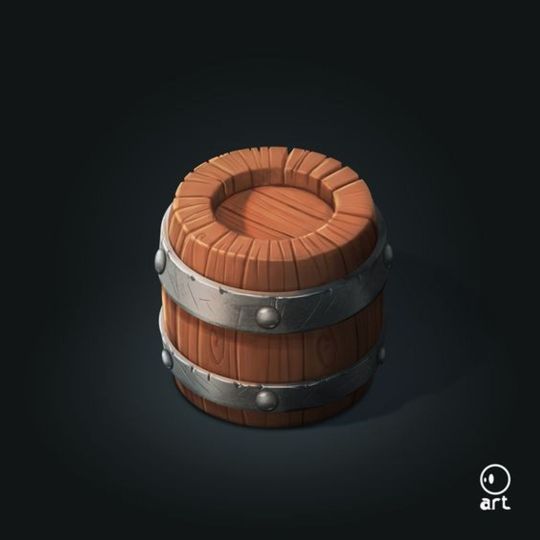
Knowing just enough about 3D modelling I figured out some rough ideas of edge loops from the jump, knowing that otherwise things could get rough.
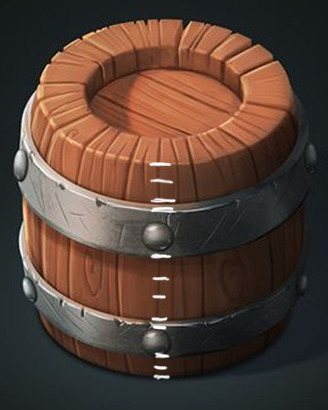
Starting with a polygon primitive, then, was the way to go. Since the barrel has quite a cute, cartoony affect I figured it should be quite stumpy. I decided on 80 cm diameter, 60 cm height, 24 faces around, 10 edge loops vertically and a loop on the cap ready to go.

Next up I moved some edgeloops to make the distinctly spaced metal bands.
I could have made those separate objects, but this felt pretty efficient in terms of polygons, and also a pretty trivial difference.

Selecting the faces of both bands I scaled them out uniformly, then selected each band's faces and scaled in down vertically again, that way the bands would come out exactly the same.
I then selected the top and bottom caps, extruded them towards each other evenly.

Next up I wanted to develop the overall, rounded nature of the barrel, so I selected the very top and bottom vertices as rings turned on soft-selection and increased the area of effect.
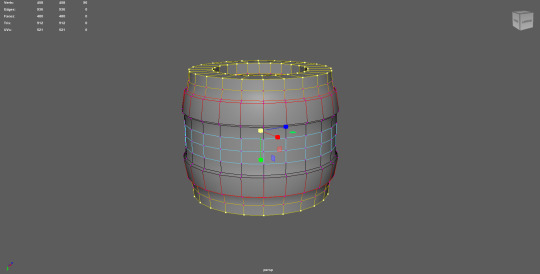
With that selection made, I scaled all the vertices along the X and Z axes, which curved the whole body nicely inward and giving me a nice round form.

Next I selected the middle faces which were out of reach of the previous soft-selection scaling, and just scaled them out to give the barrel a nice, chubby feel, as well as a continuous, consistent profile.

With the body looking right I created new objects to be the bolts that live on the metal bands of the barrel. I used polygon spheres but with a largely turned down face count.
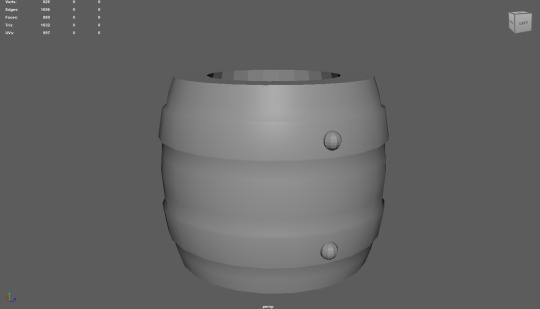
I scaled these spheres down so as to flatten them, then rotated and embedded them in ways that made sense for the source.

Selecting two of the spheres I then duplicated them and put them on the opposite side, largely mirroring their placement (at least well enough at a glance). To complete the form I would need another set of four spheres, so I selected my four, duplicated them, grouped them and rotated them 90 degrees. This fairly trivially allowed me to have a complete set of spheres and in the right positions even on close examination.

Looking over the barrel again I found the shape of the metal bands didn't stand out enough and decided to bevel them to make them stand out more sharply and distinctly.
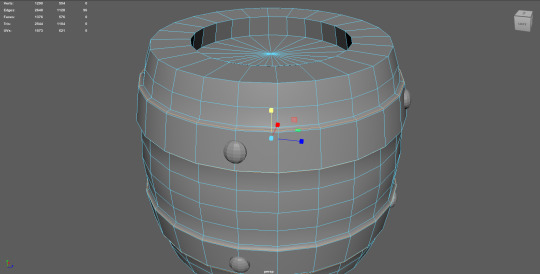
Finally, the form looked pretty much how I was hoping it would.

And here is the final result:

In contrast with the original asset you can see a few differences.
Firstly, the concept has a lot of splits in the wood that mine don't, but that would largely be addressed using normal maps and textures, more than it would modifying the topology.
More importantly, the source image of the barrel has a much cuter shape. I notice now that the metal bands stick out even further than mine do, the spheres are larger and more bulbous, and the barrel itself is bottom-heavy, whereas mine quite symmetrical.

Finally, my asset came out at a total of 1376 faces. This is actually much higher than I should like and I'll need to work on bringing that down, but that's an alright result for the moment.
If I was optimising for a fixed-rotation camera perspective like Diablo 3 I would be able to cut every underside face, as well as almost the entire back half of the barrel... But I would like to know how I might have lowered the poly count from the start without compromising too hard on feel.
Some thoughts that came out of this:
When performing operations in Maya how can I ensure that those operations are precise? (such as when scaling using the gizmo. I can do that to a grid, but what if I want an exact scaling of 69.69?
I need to spend more time observing the source material for quirks and affect. If I had spotted the tricks that made the barrel so cute I would have adapted my technique
0 notes
Text
Mastering Parkour Training: Unleashing Urban Gymnastics for Agility and Dynamic Movements
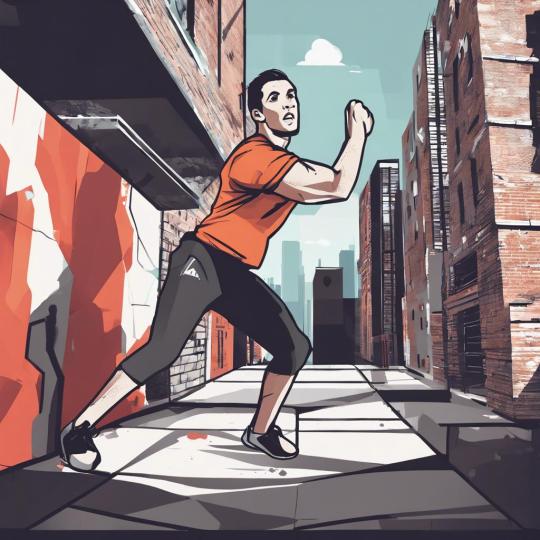
Introduction:
In recent years, the art of Parkour training has gained significant attention, captivating the hearts and minds of individuals seeking a unique and exhilarating way to explore movement and physical fitness. Rooted in urban gymnastics, Parkour combines agility, strength, and dynamic movements to conquer obstacles and navigate through urban environments. In this comprehensive guide, we will delve into the world of Parkour training, uncover its benefits, provide essential tips for beginners, and explore how you can master this thrilling discipline.
Section 1: The Art and Philosophy of Parkour (Word Count: 250 words)
Parkour originated in the late 1980s in France and was developed by David Belle, who drew inspiration from his military training and the movements of his father. At its core, Parkour is not just about performing impressive stunts but rather about understanding and utilizing one's surroundings to optimize efficiency and overcome physical obstacles. The philosophy of Parkour revolves around the notion of "being strong to be useful" and emphasizes self-improvement, discipline, and adaptability.
Section 2: Benefits of Parkour (Word Count: 250 words)
1. Physical Fitness: Parkour training offers a full-body workout, enhancing strength, flexibility, and cardiovascular endurance. The combination of repetitive movements, jumps, and vaults helps to build functional strength and improve overall fitness.
2. Mental Discipline: Parkour challenges practitioners to think critically, assess their environment, and make quick decisions. It fosters mental agility, perseverance, and problem-solving skills, developing a sharp mind that can adapt to unexpected situations.
3. Body Awareness: Through Parkour, individuals gain an acute sense of body awareness, spatial understanding, and coordination. It promotes a strong mind-body connection, enhancing balance, and proprioception.
Section 3: Essential Parkour Techniques (Word Count: 500 words)
1. Landing Techniques: A fundamental aspect of Parkour is learning how to land properly to reduce the impact on joints and prevent injuries. Two common techniques are the "Roll" and the "Precision Landing."
2. Vaulting: Vaulting techniques allow practitioners to efficiently overcome physical obstacles. The "Safety Vault," "Speed Vault," and "Kong Vault" are essential techniques to master for traversing barriers such as walls, railings, and benches.
3. Wall Runs: Wall runs involve using vertical surfaces to maintain momentum and reach greater heights. By combining speed, explosive power, and proper foot placement, practitioners can perform gravity-defying movements with confidence.
4. Cat Leap: The cat leap technique enables practitioners to propel themselves horizontally from one point to another by utilizing their upper body strength and agility. It's a key skill for navigating gaps or wide obstacles.
5. Precision Jumps: Precision jumps require precise foot placement and excellent body control. Practitioners must master this technique to effectively navigate narrow ledges or challenging distances.
Section 4: Training Tips for Beginners (Word Count: 400 words)
1. Start with the Basics: Begin your Parkour journey by mastering the fundamental movements and techniques. Focus on building strength, flexibility, and coordination through regular conditioning exercises.
2. Safety First: Always prioritize safety when practicing Parkour. Warm-up adequately, wear appropriate protective gear, and choose training locations with care. Gradually progress as your skills and confidence increase.
3. Seek Knowledge and Mentorship: Join local Parkour communities, seek guidance from experienced practitioners, and participate in workshops or classes. Learning from others is invaluable in honing your skills and receiving feedback.
4. Consistency and Progression: Consistency is key. Dedicate regular time to practice Parkour, gradually challenging yourself to push beyond your comfort zone and improve your skills. Track your progress to stay motivated.
WordPress Tags:
1. Parkour Training
2. Urban Gymnastics
3. Agility Skills
4. Dynamic Movement
Elevate your fitness game with Puravive's Advanced Fitness Tracker. This state-of-the-art device is designed to monitor your workouts, track your progress, and keep you motivated on your fitness journey. Stay ahead in your fitness goals with Puravive. Visit the Puravive Advanced Fitness Tracker Product Page.
Read the full article
0 notes
Text

🎤🐐🎶 My Legends of Avantris: Once Upon A Witchlight DR script!! 🎤🐐🎶
Last edited: November 19th, 2023

This DR is based off a D&D podcast I've been really into for the past few months, it's focused on the world and characters INSIDE the campaign and not the people running the show. I've not shifted to this DR yet, but I've had some dreams about it!

Basic info:
My name is Calun or Cal for short and I'm a satyr bard who was born and raised in Prismeer (The Feywild)
Backstory: I don't remember much about my life from before I started performing as a bard, any family or friends from my youth have been completely forgotten and all I have are the vague memories of someone taking me to shows at the theater which sparked my love of music/performance and my desire to be a bard.
My gender and sexuality: Non-binary and Pan/Ace (They/Them)
My height: 5'4
I have: Short and fluffy brown hair/fur/goat-like ears and tail, pale-ish freckled skin, black hooves/horns/nose/tipped fingers (Hero forge didn't have it as an option for the ref but it's on my Pinterest board) and blue goat eyes.
I wear: A pair of scientist goggles on my forehead, twin pairs of golden earrings in either of my goat-like ears, a black ring on my middle finger on my right hand, a blue long-sleeved sweater with stripes of different shades of blue, a collar of fluff, black capri pants and an overly filled backpack that slings around my body.
My hobbies: Cooking/baking, stargazing, climbing, swimming, singing, making jewelry, collecting trinkets, dancing.
Ideals: Using my talents to help others is the best way of helping myself, I go where the road takes me (sometimes that's a good thing.)
Flaws: I like to explore and my curiosity will sometimes get me into trouble, I am trusting even to my detriment and it has caused me to get into trouble before
Skills: I can climb more than 1,500 vertical feet in 20 minutes (Because of goat legs), I am ambidextrous,
My stats: Strength: 12 + 1 Wisdom: 10 + 0 Dexterity: 11 + 0 Intelligence: 9 - 1 Constitution: 17 + 3 Charisma: 15 + 2
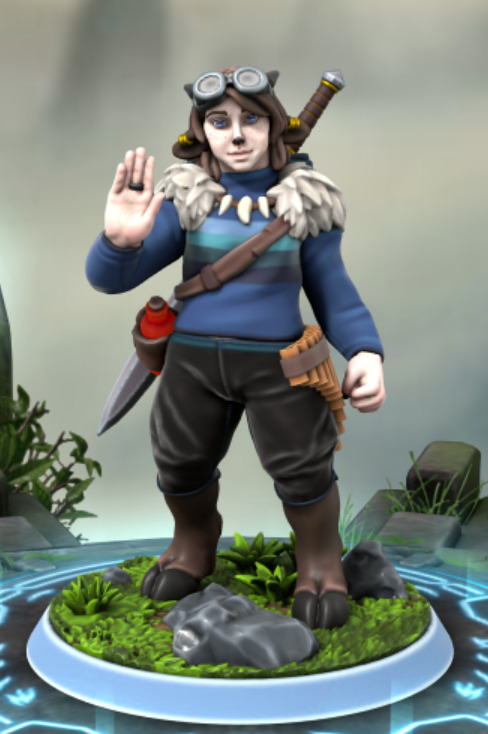

Race, Class and Background info:
Race (Satyr):
Satyrs have a well-earned reputation for their good spirits, gregarious personalities, and love of revels. Most satyrs are driven by two simple desires; to see the world and to sample its every pleasure. While their spontaneity and whimsy sometimes put them at odds with more stoic peoples, satyrs rarely let the moodiness of others hinder their own happiness.
Ability Score Increase: Your Charisma score increases by 2, and your Dexterity score increases by 1.
Age: Satyrs mature and age at about the same rate as humans.
Alignment: Satyrs delight in living a life free of the mantle of law. They gravitate toward being good, but some have devious streaks and enjoy causing dismay.
Size: Satyrs range from just under 5 feet to about 6 feet in height, with generally slender builds. Your size is medium.
Speed. Your base walking speed is 35 feet.
Fey: Your creature type is fey, rather than humanoid.
Ram: You can use your head and horns to make unarmed strikes. If you hit with them, you deal bludgeoning damage equal to 1d4 + your Strength modifier.
Magic Resistance: You have advantage on saving throws against spells and other magical effects.
Mirthful Leaps: Whenever you make a long or high jump, you can roll a d8 and add the number to the number of feet you cover, even when making a standing jump. This extra distance costs movement as normally.
Reveler: You have proficiency in the Performance and Persuasion skills, and you have proficiency with one musical instrument of your choice.
Languages: You can speak, read, and write Common and Sylvan
Class (Bard):
Armor: Light armor
Weapons: Simple weapons, hand crossbows, longswords, rapiers, shortswords
Tools: Three musical instruments of your choice (Pan flutes, Guitar and Bongos)
Saving Throws: Dexterity, Charisma
Skills: Choose any three (Athletics, Acrobatics and Medicine)
You start with the following equipment, in addition to the equipment granted by your background: a longsword, an entertainer's pack (A backpack, a bedroll, two costumes, five candles, five days of rations, a waterskin and a disguise kit), pan flutes, leather armor and a dagger.
Background (Caravan Specialist):
You are used to life on the road. You pride yourself at having traveled every major trade way, including the best backroads and shortcuts. When traveling these roads, you know where the best inns, campsites, and water sources are located, as well as potential locations of danger such as ambush. Having worked the roads as long as you have, you have made many acquaintances and find it easy to pick up information and rumors floating from town to town. You are skilled with beasts of burden and handling and repairing wagons of all kinds.
Skill Proficiencies: Animal Handling, Survival
Tool Proficiencies: Vehicles (land)
Languages: One of your choice. (Goblin)
Equipment: A whip, a two-person tent, a regional map, a set of traveler's clothes, and a belt pouch containing 10 gold pieces.

Spells:
Dancing Lights: You create up to four torch-sized lights within range, making them appear as torches, lanterns, or glowing orbs that hover in the air for the duration. You can also combine the four lights into one glowing vaguely humanoid form of medium size. Whichever form you choose, each light sheds dim light in a 10-foot radius.
Mage Hand: A spectral, floating hand appears at a point you choose within range. The hand lasts for the duration or until you dismiss it. You can use the hand to manipulate an object, open an unlocked door or container, stow or retrieve an item from an open container, or pour the contents out of a vial.
Thunderclap: You create a burst of thunderous sound, which can be heard 100 feet away and makes creatures takes thunder damage.
Vicious Mockery: You unleash a string of insults laced with subtle enchantments at a creature and they take psychic damage and have disadvantage on the next attack it makes.
Seeming: This spell allows you to change the appearance of any number of creatures (including yourself) that you can see including their clothing, armor, weapons, and other belongings on their person – look different until the spell ends.
Dissonant Whispers: You whisper a discordant melody that one creature of your choice can hear, wracking it with terrible pain. The target takes psychic damage and must immediately use its reaction, if available, to move as far as its speed allows away from you.
Mass Healing Word: As you call out words of restoration, up to six creatures of your choice that you can see regain hit points.
Feather Fall: Choose up to five falling creatures within range. A falling creature’s rate of descent slows to 60 feet per round until the spell ends. If the creature lands before the spell ends, it takes no falling damage and can land on its feet, and the spell ends for that creature.
Cloud of Daggers: You fill the air with spinning daggers in a cube 5 feet on each side, centered on a point you choose. A creature takes slashing damage when it enters the spell’s area.
Tasha's Hideous Laughter: A creature of your choice that you can see perceives everything as hilariously funny and falls into fits of laughter. The target falls prone, becoming incapacitated and unable to stand up for the duration.
Mirror image: Three illusory duplicates of yourself appear in your space. Until the spell ends, the duplicates move with you and mimic your actions, shifting position so it’s impossible to track which image is real. Each time a creature targets you with an attack during the spell’s duration, instead targets one of your duplicates. If you have three duplicates. If an attack hits a duplicate, the duplicate is destroyed. A duplicate can be destroyed only by an attack that hits it. It ignores all other damage and effects. The spell ends when all three duplicates are destroyed. A creature is unaffected by this spell if it can’t see, if it relies on senses other than sight, such as blindsight, or if it can perceive illusions as false, as with truesight.
Prestidigitation: This spell is a minor magical trick that novice spellcasters use for practice. You create one of the following magical effects: You create an instantaneous, harmless sensory effect, such as a shower of sparks, a puff of wind, faint musical notes, or an odd odor. You instantaneously light or snuff out a candle, a torch, or a small campfire. You instantaneously clean or soil an object. You chill, warm, or flavor up to 1 cubic foot of nonliving material for 1 hour. You make a color, a small mark, or a symbol appear on an object or a surface for 1 hour. You create a nonmagical trinket or an illusory image that can fit in your hand. If you cast this spell multiple times, you can have up to three of its non-instantaneous effects active at a time, and you can dismiss such an effect as an action.
Raulothim's Psychic Lance: You unleash a shimmering lance of psychic power from your forehead at a creature that you can see. Alternatively, you can utter a creature’s name. If the named target is within range, it becomes the spell’s target even if you can’t see it. If the named target isn’t within range, the lance dissipates without effect. The target takes psychic damage and is incapacitated until the start of your next turn.
Catnap: You make a calming gesture, and up to three creatures of your choice that you can see fall unconscious for the spell’s duration. The spell ends on a target early if it takes damage or someone uses an action to shake or slap it awake. If a target remains unconscious for the full duration, that target gains the benefit of a short rest, and it can’t be affected by this spell again until it finishes a long rest.
Hypnotic Pattern: You create a twisting pattern of colors that weaves through the air inside a 30-foot cube within range. The pattern appears for a moment and vanishes. Each creature in the area becomes charmed for the duration. While charmed by this spell, the creature is incapacitated and has a speed of 0. The spell ends for an affected creature if it takes any damage or if someone else uses an action to shake the creature out of its stupor.
Nathair's Mischief: You fill a 20-foot space with fey and draconic magic effects such as: The smell of apple pie fills the air and each creature in the cube become charmed by you, Bouquets of flowers appear all around and each creature in the cube is blinded as the flowers spray water in their faces, Each creature in the cube begins giggling and is incapacitated plus uses all its movement to move in a random direction, Drops of molasses appear and hover in the cube, turning it into difficult terrain. You can move the cube up to 10 feet in any direction.
Hold Monster: Choose a creature that you can see, the target is paralyzed for the duration but this spell has no effect on undead. At Higher Levels, when you cast this spell you can target one additional creature for each level above 5th. The creatures must be within 30 feet of each other when you target them.
Raise Dead: You return a dead creature you touch to life, provided that it has been dead no longer than 10 days. If the creature’s soul is both willing and at liberty to rejoin the body, the creature returns to life. This spell also neutralizes any poison and cures nonmagical diseases that affected the creature at the time it died. This spell doesn’t, however, remove magical diseases, curses, or similar effects; if these aren’t first removed prior to casting the spell, they take effect when the creature returns to life. The spell can’t return an undead creature to life. This spell closes all mortal wounds, but it doesn’t restore missing body parts. If the creature is lacking body parts or organs integral for its survival – its head, for instance – the spell automatically fails.
Rary's Telepathic Bond: You forge a telepathic link among up to eight willing creatures of your choice, psychically linking each creature to all the others for the duration. Until the spell ends, the targets can communicate telepathically through the bond whether or not they have a common language. The communication is possible over any distance, though it can’t extend to other planes of existence.
Synaptic Static: You choose a point within range and cause psychic energy to explode there. Each creature in a 20-foot-radius sphere centered on that point takes psychic damage and has muddled thoughts for 1 minute.
Friends/Family:
Friend(s):
Torbek (1): A bugbear bloodhunter/rouge who was experimented on and now has a drug known as witchlight pumping into his body via a machine on his back which when activated, turns him into a killing machine with a british accent which can poison his enemies and won't stop until they are dead. We are best friends, sleeping curled up together in the common room of any inn the party goes to because of our mutual fear of abandonment causing us not to sleep good if not close to somebody.
Kremy Lecroux (2): A lizardfolk warlock under the order of the loa of death, Baron Samedi. He can mind control someone by asking the phrase "Would you kindly?" at them and has been known to do it to Gideon multiple times. He can also clean up any mess with the snap of his clawed alligator fingers. We have a pseudo father-child relationship as he calls me "Kiddo" since I picked up calling him "Mr. Kremy" from Torbek. He and Gideon are married.
Gideon Coal (3): A fire genasi fighter who has the ability to use his chains as a weapon, by either whipping them around, grappling, using his fire genasi power to do all this but with burning hot chains. Gideon can also do basic fighter things like punch, etc. He also can use his fire to fight. He has a thick southern accent and a hatred for clowns and hobgoblins but a love for cigars, mechanical machines and beautiful women. We are decently close with a mix of a parent-child and trusted adult relationship, comfortable enough to rant about our issues while hanging out. He and Kremy are married.
Gricko Grimgrin (4): A goblin druid who can play an owl shaped ocarina to transform into any animal spirit he desires or summon healing "bananyas" for the party. He is the adopted father of Hootsie the owlbear and treats her like his own flesh and blood. We are fairly close with us collaborating on pranks to use on the rest of the party fairly often.
Hootsie (not pictured): An owlbear cub saved (stolen) by Gricko from the Witchlight carnival, she is kind and willing to do tricks for rat snacks as she is a carnivore. I adore her and treat her like a younger sister and will often be found petting or taking care of her.
Morning Frost (5): A tabaxi sorcerer whose magic comes from the power of his mind, able to do telepathy, telekinesis, teleportation and being able to render beings immobile. He is also able to mend items or clothing. Due to his training, he is sensitive to all of his senses including touch, taste, smell, sound, sight, and a sixth unnamed sense. We have an older brother-younger sibling dynamic where I'll ask him stuff I don't know but also annoy him and he will explain stuff to me but also nag me when I do something stupid.

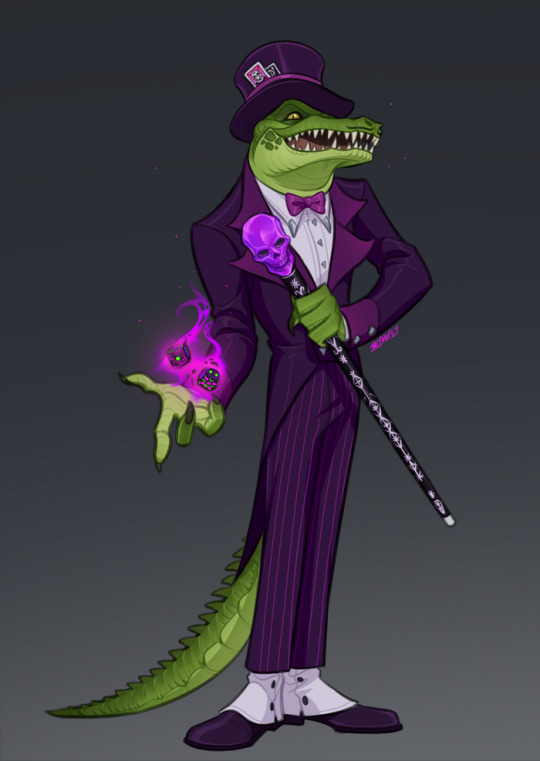
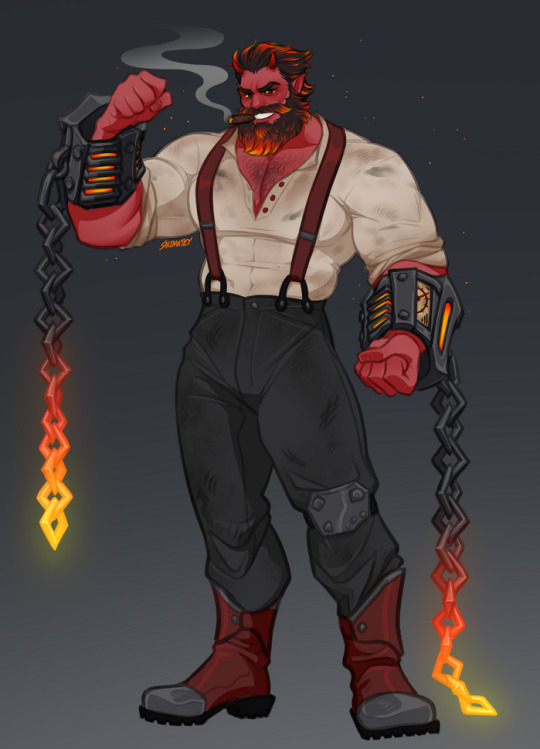



Pinterest board:

Spotify playlist:

1 note
·
View note
Text
Sports massage is one of the most effective ways to deal with pain, injuries, and aches that occur by playing sports, exercising, or sitting at your desk for long hours. Sports Massage in Clayfield is also a widely recognised component for performance enhancement, injury prevention, and post-injury rehabilitation for athletes.
In reality, we see many elite athletes receiving sports massage for pre- and post-events, but it is still ignored by most amateur athletes and people in their fitness journey.
To increase awareness, we are going to explain the various benefits of sports massage and its practical applications to prevent injuries and accelerate recovery processes.
· Sports Massage for Injury Prevention
Several instances show that athletes who receive regular sports massage from a professional Massage Therapist in Clayfield often experience minimum musculoskeletal injuries. Sports massage therapy is highly effective in injury prevention by improving blood circulation, enhancing flexibility, decreasing muscle tension, and boosting range of motion.
As a result, athletes experience optimised biomechanics in their bodies which eliminate the risk of muscle strains, overuse injuries, and ligament sprains.
· Sports Massage for Pre-Event Preparation
Pre-event sports massage can significantly improve performances in vertical jump height and muscle strength. If you are associated with sports like basketball, you can highly benefit from the treatment of a professional sports Massage Therapist in Chermside who can help you increase your blood flow to the muscles, lowering muscle tightness, and boosting mental relaxation.
· Sports Massage for Post-Event Recovery
Massage therapy following any sports event helps remove metabolic waste products, including lactic acid from muscles. Sports massage for the post-event recovery process is also effective for promoting relaxation, aiding tissue repair, and reducing muscle soreness. Thus, it accelerates the recovery and helps athletes prepare for subsequent sports events.
· Sports Massage for Rehabilitation
Many professional athletes have admitted that sports massage helped them in their rehabilitation phase. Combined with other rehabilitation strategies, Sports Massage in Clayfield can aid an athlete’s recovery phase by promoting blood circulation, seizing scarred tissues, and facilitating tissue healing.
· Collaborative Approaches for Optimal Results
Whether you need to prevent injuries or promote the recovery process after a sports injury, you should consider the collaborative approach with a fitness professional, sports therapist, and Massage Therapist in Clayfield to achieve the optimal outcome.
At SOL BODYWORKS, we offer personalised sports massage along with other massage treatments to provide athletes with a competitive edge by addressing their specific requirements.
FAQs:
Who can benefit from sports massage?
Sports massage can benefit anyone and everyone! Whether you are a professional athlete willing to improve your performance, an amateur looking to relax your aching muscle, or someone keen to return from an injury, a sports massage by a Massage Therapist in Chermside could help you.
How often should you consider a sports massage?
A professional massage therapist is the best person to recommend how often your body needs to undergo a sports massage. For specific sports training, a sports massage can be recommended on a weekly, bimonthly, or monthly basis.
How long do you need to rest after sports massage therapy?
To get the maximum benefits of sports massage therapy, it is recommended to rest for 24 to 48 hours.
0 notes
Text
Why VKTRY Insoles Are the Ultimate Performance Upgrade for Athletes
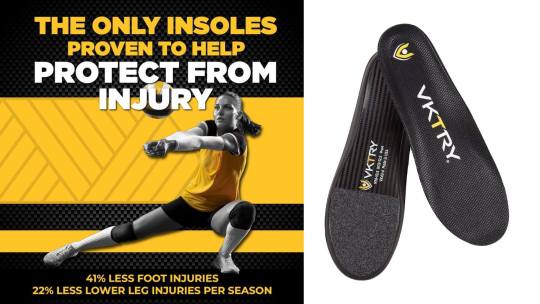
Athletes in the cutthroat world of sports are always looking for methods to outperform their competitors. From rigorous training regimens to advanced equipment, every advantage counts. One such advantage that has been gaining attention in recent years is the use of specialized insoles, and among them, VKTRY Insoles stand out as the ultimate performance upgrade for athletes.
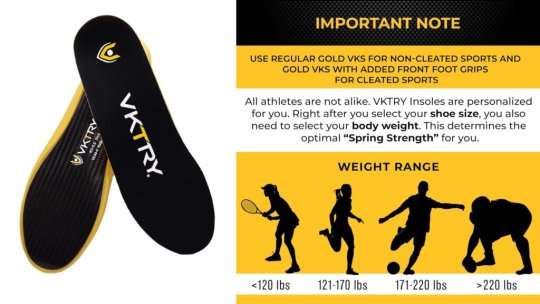
The Importance of Insoles for Athletes
Athletes put immense stress on their feet, whether they're running, jumping, or making sudden pivots. This constant strain can lead to various issues, including foot pain, instability, and reduced performance. Insoles play a pivotal role in mitigating these problems, providing comfort, support, and enhanced performance.
What Are VKTRY Insoles?
VKTRY Insoles are cutting-edge, performance-enhancing insoles designed specifically for athletes. Crafted using aerospace-grade carbon fiber, these insoles are engineered to optimize energy return, stability, and shock absorption. They are custom-made to fit the athlete's foot, ensuring a personalized experience.
How Do VKTRY Insoles Work?
VKTRY Insoles work by harnessing the power of carbon fiber. The advanced materials and design store and return energy with each step an athlete takes. This energy return can significantly enhance an athlete's performance, providing an extra spring in their step and reducing fatigue.
Benefits of Using VKTRY Insoles
Using VKTRY Insoles offers a multitude of benefits. These insoles can:
- Increase vertical jump height
- Enhance speed and agility
- Reduce the risk of injuries
- Improve overall comfort during training and competition
Who Can Benefit from VKTRY Insoles?
VKTRY Insoles are not limited to a specific sport or athlete type. Athletes from various disciplines, including basketball, football, track and field, and more, can benefit from the improved performance and injury prevention these insoles offer.
A Closer Look at the Technology
The technology behind VKTRY Insoles is truly remarkable. The insoles are engineered with precision, ensuring that every athlete gets a tailored experience. They provide an optimal balance of support and flexibility.
Testing and Performance
Extensive testing and research have gone into the development of VKTRY Insoles. They have been proven to help athletes achieve higher jumps and better acceleration, all while reducing the strain on their feet.
What Athletes Are Saying
The best judge of a product's performance is the athletes who use it. Many professional athletes have endorsed VKTRY Insoles and have experienced a significant improvement in their performance and overall well-being.
VKTRY Insoles vs. Traditional Insoles
VKTRY Insoles outperform traditional insoles in several key areas. The carbon fiber technology, personalized fit, and energy return capabilities set them apart from the competition.
How to Choose the Right Pair
Selecting the right pair of VKTRY Insoles is crucial for optimal performance. Each athlete's needs may vary, so a personalized consultation with a VKTRY specialist is recommended.
Installation and Maintenance
Once you've obtained your VKTRY Insoles, proper installation and maintenance are essential to ensure they continue to perform at their best. Proper care can extend their lifespan and effectiveness.
Where to Buy VKTRY Insoles
VKTRY Insoles are available through their official website and select retailers. Ensure you purchase from a trusted source to guarantee the authenticity of the product.
Conclusion
In the world of sports, even the smallest advantage can make a big difference. VKTRY Insoles offer athletes a unique opportunity to enhance their performance, reduce the risk of injuries, and train in comfort. With cutting-edge technology and the support of professional athletes, these insoles have cemented their status as the ultimate performance upgrade for athletes.
FAQs
1. Are VKTRY Insoles appropriate for all sports?
- VKTRY Insoles are versatile and can benefit athletes in a wide range of sports.
2. How do I know which size of VKTRY Insoles to choose?
- VKTRY provides a personalized fitting consultation to help you choose the right size.
3. Do VKTRY Insoles require any special care or maintenance?
- Proper installation and regular cleaning are essential for maintaining their performance.
4. Can VKTRY Insoles really help with injury prevention?
Yes, VKTRY Insoles are designed to reduce the risk of injuries by providing better support and shock absorption.
5. Where can I purchase authentic VKTRY Insoles?
- To ensure authenticity, it's recommended to purchase VKTRY Insoles from their official website or authorized retailers.
Get Access Now: https://amzn.to/3FpCeHN
Incorporating VKTRY Insoles into your athletic routine may be the key to unlocking your full potential as an athlete. Whether you're aiming to jump higher, run faster, or simply perform at your best, these insoles can make a significant difference in your athletic journey. Don't miss the opportunity to experience the ultimate performance upgrade for athletes. Get started with VKTRY Insoles today!
Read the full article
0 notes
Text
Flexibility training from etobicoke personal trainer: why stretching and flexibility is important
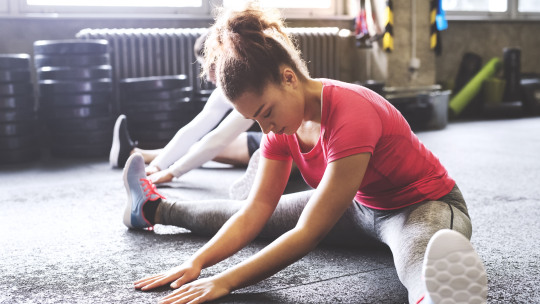
In the world of fitness and athletic training, flexibility exercises and stretching have experienced significant changes. More research has been published and subsequently incorporated into exercise and conditioning regimens over the previous ten to fifteen years.
In the past, the advantages of stretching were based on beliefs that people had, but today, there is data-based evidence to support the use—or lack of use—of stretching and flexibility regimens.
Stretching, if done correctly, can enhance your range of motion, promote muscular flexibility, and prevent injury, as Etobicoke personal trainer have demonstrated in curriculum.
Let's examine some of the research on the advantages and applicability of general flexibility training.
BENEFITS OF EXTENSION
The advantages of flexibility training, according to, include a lower risk of injury, the avoidance or correction of muscle imbalances, better posture, and an increase in joint range of motion.
Reviewed the body of research on flexibility and stretching and discovered seven studies that suggested regular stretching, rather than stretching before exercise, improved performance on the following metrics: maximal voluntary contraction, contraction velocity, eccentric and concentric contraction force, counter-movement jump height, and 50-yard dash time.
Analysis of the study employed a wide range of participants and covariates, which showed that stretching regularly has significant performance advantages. High school kids, senior citizens, competitive athletes, recreational athletes, and both men and women were study participants.
According to Woods, stretching should be a regular component of a fitness regimen in order to take advantage of the long-term elastic changes in muscles, which increase range of motion and may reduce the risk of muscle-tendon damage.
AN OVERVIEW OF DIFFERENT TYPES OF STATIC STRETCHING RESEARCH
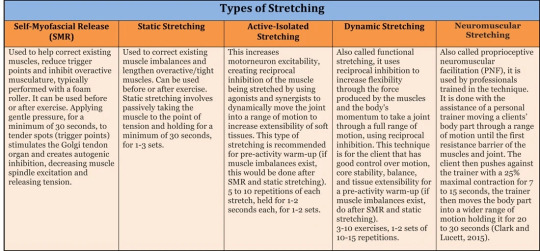
Stretch duration's impact
When a single muscle area is static stretched for more than 90 seconds (three stretches of 30 seconds each), as was the case in evaluation of the data, there is significant evidence that the stretching affects performance right away. Recent research have shown that static stretching has no negative effects on performance. This can be due to less intense stretching and shorter stretching durations. When done as part of a warm-up, shorter stretching sessions, such as 30 seconds per muscle group, may not have a negative effect on performance, especially if employed by high-performance athletes or clients of well-trained fitness facilities.
The length of stretching employed in some research doesn't necessarily reflect how athletes and fitness clients actually practice. In a survey of professional strength and conditioning coaches in North America, it was discovered that the average stretch times for their athletes ranged from 12 to 18 seconds for football, baseball, basketball, and basketball players.
CONTRADICTIONS OF STATIC STRETCHING
20 studies were found in assessment of the literature that demonstrated static stretching before exercise reduced performance on the following tests: maximum voluntary contraction, power, jump height, force, and velocity.
Used the FIFA 11+ software, dynamic stretching, and static stretching to examine the performance of 22 elite college soccer players after participating in these warm-up activities. Running, active stretching, and strength training are all part of the FIFA 11+ warm-up. The following tests were administered to the players following the warm-up protocols:
1) The Illinois agility test;
2) The vertical leap;
3) The 30-meter dash; and
4) The range of motion in the knee.
The findings show that compared to dynamic stretching, vertical jump performance was considerably poorer after static stretching. Compared to FIFA 11+, sprint performance drastically decreased after static stretching. In comparison to FIFA 11+ and static stretching, agility time was substantially faster after dynamic stretching. When compared to dynamic stretching, the static stretching dramatically increased knee range of motion.
STATISTICAL STRENGTHENING DECREASES RISK OF INJURY
Increased hamstring flexibility may reduce lower extremity overuse injuries in military infantry basic trainees, according to research. The control company (N 148) underwent standard basic instruction. The intervention company (N 150) added three hamstring stretching sessions to their fitness regimen along with basic training. Compared to the control group, the stretching group dramatically improved hamstring flexibility.
The incidence rates of the two groups were considerably different: 25 injuries occurred in the stretching group while 43 injuries occurred in the control group (incidence rate: 16.7% vs. 29.1%). Infantry basic training students with greater hamstring flexibility had a considerably decreased incidence of lower extremity overuse injuries.
Examined the impact of stretching and not stretching on 1538 recruits for the Australian army. The control group did not stretch while the stretching group underwent static stretching for the lower limbs during pre-exercise warm-ups. 158 injuries occurred in the stretch group and 175 injuries occurred in the control group; these differences were not statistically significant. Therefore, whether they stretched or not, the army recruits sustained injuries. The 20-m progressive shuttle run test score, age, and date of enlistment were all found to strongly predict injury risk by the researchers.
In order to determine whether static stretching as a component of a warm-up helps to ward against injury, Reviewed the literature. Research from 1990 to January 2008 was examined. The review included seven out of 364 papers. Stretching did not reduce injury in four of the randomized clinical studies, but it did in one of the three controlled clinical trials. Despite nonsignificant decreases in the overall injury risk, three out of seven trials found that a static stretching protocol significantly reduced the number of injuries. There is moderate to strong evidence, according to the researchers, that static stretching does not prevent damage. They do, however, add that there is some preliminary proof that static stretching may lessen damage.
WORKPLACE STRENGTHENING
In a 1990 study by Hilyer et al. on fire fighters, it was discovered that there was no appreciable difference in the incidence of injury in the stretching group and the control group that did not stretch. However, the stretching group's injuries cost less money in lost productivity time and were less severe.
Talked to employees at a manufacturing company about a pre-work warm-up that lasted fifteen minutes and included both static and active stretching. A voluntary attendance of 30% of the workforce was present. In the four years that the warm-up was optional, 86% of the workers who had minor and significant injuries did not take part in it, according to the injury figures. This does not prove cause and effect, but it does imply that a warm-up before work could lessen damage.
According, one-third of injuries in the US construction industry are musculoskeletal in nature. Despite the fact that there isn't enough data to support their usefulness, businesses have instituted stretching programs to lower injuries. The researchers surveyed 133 people online and conducted interviews with 19 safety professionals. 56 percent of respondents had started a stretching routine. The safety experts who reported a decrease in injuries concurred that stretching alone was not to blame. The number of injuries decreased as a result of these and other variables, including improved worker cooperation, communication, and camaraderie.
CONTINUUM OF INTEGRATED FLEXIBILITY
The neuromuscular system is affected differently by each type of stretching. It is crucial to base exercise choices on your client's fitness assessments, their goals, and the timing of the stretching activities when selecting the stretching techniques (and protocols) to utilize with them.
• Corrective Flexibility: This phase aims to address typical muscular imbalances, joint dysfunction, and postural dysfunctions. SMR and static stretching are both a part of it, as well as neuromuscular stretching with proper technique.
• Active Flexibility: Tissue extensibility is improved during this period. It entails SMR as well as active isolation stretching (and, with proper technique, neuromuscular stretching).
• Functional Flexibility: The goal of this phase is to increase the elasticity of multiplanar soft tissues and to achieve optimal neuromuscular control throughout a broad range of motion. SMR and dynamic stretching are examples of this.
1 note
·
View note
Text
Jump Manual's Jacob Hiller Review: IS IT A SCAM?
If you’re a basketball fanatic who has a love for the game, then the thought of one day being able to dunk has probably crossed your mind. Now in terms of height and God given ability, not everyone can be born with what NBA players have. Today, we dive into the realm of vertical leap enhancement with one of the most reputable programs in the field – “The Jump Manual” by the renowned athletic performance coach, Jacob Hiller. Hiller is a certified personal trainer by the ACE (American Council on Exercise), and his methods and techniques are tried and true. So you can be sure that you’re getting the right information from a legit source. In The Jump Manual, he busts a lot of these myths and shows you exactly what works and what doesn’t, so you can focus on the things that do, and avoid all the pitfalls that lead to failure/mediocre results. With more than 10 years of experience under his belt, Jacob has mastered his method and techniques to perfection and put it into his manual, giving you insights into what works and what doesn’t when it comes to increasing your vertical leap. The program was released in 2008 and since then has helped thousands of athletes to reach their dream of dunking. And even 10 years later, at age 35, Jacob Hiller's vertical is still impressive! I first decided to try it because I was intrigued with the Max Explosion workout. The manual is an entire program of vertical jump training. It show which days to train, sets, reps, techniques, and a video demonstration of all exercises used. It also gives you information on nutrition and recovery. Recovery is huge for explosive athletes.
If there’s something I noticed about basketball players is that usually the majority of them depend upon professional coaches or their colleagues for guidance and information during their jump training. They work meticulously and try hard repeating the exercises which are known to increase vertical jump. Due to the sheer amount of work they put in, what would be a small problem for an amateur now becomes a big problem for the professional and the result is usually an ongoing fail. Essentially Jacob Hiller discusses the difference between working out for muscle strength and muscle endurance. Knowing the difference between these two is important as doing the wrong one will essentially mean you are wasting your time if your goal is to increase your vertical jump. The uniqueness in this program is that it uses what’s called a ‘multi facet approach‘. Basically, this means assaulting the problem from all angles possible to create the maximum effect. This program uses scientific techniques to improve your vertical jump and is supported by clinical studies which prove these methods are the most safe and effective in exercising your vertical jump. If you have never performed deadlifts or heavy squats, Jacob Hiller recommends finding a trainer to show you the correct techniques. Without a trainer, you are risking hurting your back, your knees or both. The Jump Manual is more effective for experienced weightlifters as opposed to beginners. Experienced weightlifters can use the exercises and techniques in this book to improve their skills and see a significant strength increase within a fairly short period of time.
Following the program, you will see a marked difference in performance of all necessary components that make up an excellent baller. Plus the confidence boost it gives is worth the signup fee alone! The level of athleticism achieved by each individual is down to how intensely they follow the program and the level of commitment demonstrated. With a focused approach and unwavering dedication, you really can increase your jump. Whether you’re a dedicated basketball player aspiring to dominate the court, a volleyball enthusiast reaching for those sky-high spikes, or simply a fitness enthusiast eager to test your jumping prowess, “The Jump Manual” promises to take your athletic abilities to new heights. As a result, if you’re able to follow through with the directions, you’re just about assured to have an eruptive upright when you’re done. I bought the program myself back when I was just getting into learning how to dunk, and after completing it, I saw some pretty nice results. And in that 10 weeks, I saw an improvement of slightly over 9.6” in my vertical.
Click here to Visit The Official Jump Manual Website
0 notes
Text

Name: Taylor Kinsey Bourne
Nickname: Tay, Tay Tay, TK, Kinz, Kiki
Alias: Punk Rock Princess
Birthday: December 25
Age: Immortal {20, almost 21}
Sexuality: Bisexual
Location: Nightshade Cove
Species: Vampire
Powers: Listed Below
Occupation: Ghost Hunter, Musician
Height: 5′4″
Weight: 115 lbs
Eye Color: Dark Brown
Hair color: Black
Piercings: A few
Tattoos: Quite a bit
Scars: None
Faceclaim: Maggie Lindemann

Biography
Taylor Kinsey Bourne was born at midnight on December 25th in Luna Springs Hollow, raised in Nightshade Cove.
Personality
Taylor initially comes across as quite sarcastic and rebellious, someone who doesn’t have any fucks to give. She is a full-on nonconformist and she tends to be quite a loner at times, only allowing a selective few to get close to her. She is sweet towards anyone she is fond of and sour towards anyone she isn’t fond of, she’s quite a charmer, especially when she wants to be. The female is very determined, hard-working, resourceful, creative, ambitious, high-spirited, and highly intelligent. She is quite a fun loving, adventurous daredevil with a sense of curiosity and wonder. She can be spontaneous, reckless, and impulsive. Bourne is highly stubborn and dramatic but she’s courageous, as well as fearless and care-free.
Tay is someone who isn’t afraid to take risks, some who will stick up for what she believes is right. She is also very independent and confident but she is also impulsive and mysterious, she is quite flexible, energetic, and playful. She’s a bit egotistical and kinda selfish at times, sometimes manipulative and short-tempered but mostly she’s passionate.
Powers
Vampirism - Vampires have sharp, pointed, retractable fangs that extend beyond their human teeth. Vampires are said to mainly bite the victim's neck, extracting the blood from a main artery.
Superhuman Strength - The superior physical strength of a vampire compared to that of a human is a prominent theme. Vampires possess strength equivalent to that of 100 or more strong men, sufficient to single-handedly lift heavy boulders with ease. Newborn vampires generally have the advantage of superior strength when in direct physical combat with a human; they can single-handedly lift a grown man off the ground and throw him across a room with enough speed and force to send him through a wall or across an alley, they can also knock them unconscious with a single chop, snap their necks with one hand, and crush their bones, all with little to no effort. Their strength increases to a degree as they age; older vampires of a significant age are stronger than younger, weaker vampires.
Superhuman Speed - Vampires are extremely quick, moving faster than the human eye can possibly see. They can run in excess speeds and in their human form out run many beings such as ghosts and demons, they're significantly faster than a human werewolf and slightly faster than a turned one thanks to their stature. The creature’s sheer speed, combined with its unnatural stealth, makes it impossible for the vampire’s prey to detect or escape from the vampire until it is too late. Vampires are able to dodge bullets, and react with unnatural quickness to any threat, due to the creature’s superhuman reflexes. In order to attain more speed, a vampire can take the form of bats.
Superhuman Stamina - Vampires are able to move at great speed for long periods, and it is nearly impossible to tire the vampire, due to its preternatural degree of endurance. They do not need to sleep and do not require food or oxygen. It means that drowning would never kill a vampire.
Superhuman Agility - Vampires possess supernatural agility, they can nimble enough to scale sheer surfaces with amazing speed, vertically or horizontally, much like a spider. This ability would allow them to access places that would be otherwise impossible for a human to reach. They can jump further than any normal human, such as from roof top to roof top or building to building. They are so agile as to dodge a bullet from the distance of only a few feet.
Superhuman Durability - Vampires are incapable of being slain by most forms of conventional injury, including firearms, blades or lesser spells. Furthermore, the vampire cannot feel the pain that would result from such attacks. Gunfire has no effect on the immortal whatsoever, serving only to slow the creature down. Likewise, blades don’t affect the vampire at all, unless a silver blade pierces the heart or removes the head. Vampires also are immune to cold and poison and frost spells do no damage to them. Vampires heal instantly when blood is present otherwise they heal slowly. that they have been dubbed to be immune to mundane weapons.
Superhuman Senses - Vampire’s senses of sight, smell, hearing, and touch are of supernatural keenness, comparable on many levels to a bat’s. The vampire can see with perfect clarity in the darkness of the night, to the point of being able to detect the bodily heat emanations from its victims. The creature’s hearing is comparable to a bat or an owl, possessing a level of sensitivity on par with the bat’s own echo-sensitivity and they even have a sonar system just in case they are blinded. The Vampire’s sense of smell is as acute as that of a wolf or a dog’s, enabling the creature to track its prey for miles by the scent of the victim’s blood alone, a sensation that the vampire relishes. The Vampire is also able to tell individual people apart by the scent of their blood coursing through their veins or bodily odors. The Vampire’s sense of touch is amazingly acute, as the creature can feel the heartbeat of a potential victim through thick walls, or it can detect the vibrations of a vampire hunter’s footsteps and the direction of the footsteps, enabling the Vampire to either escape or prepare an ambush for the would-be hunter. In addition to its five senses, the vampire possesses several preternatural senses. The Vampire can instinctively sense impending danger, usually posed by humans. Vampires can feel the heartbeat of a person and see the blood and brain activity, allowing them to save lives of people. Vampires require a very little amount of blood to tell the age, race, gender, blood type, health status and eating habits.
Scaling Walls - Vampires can scale walls like spiders and still act like they were walking on the ground with their capes and clothes falling towards their feet instead of the soil. They can detach at will to land on the ground and carry on their work from there.
Hypnosis - Through the use of hypnosis, Vampires are able to dominate the mind and will of a human by simple eye contact, soft speech or a simple wave of the hand. The Vampire’s bite seems to have an anesthetic effect on the victim; giving the creature the time it needs to feed and also instantly sealing the cut to prevent loss of blood and keeping no memory of it. To dominate a human, the vampire needs only make eye contact with its victim for a few seconds and then bite to spread vampirism. However, the stronger the human’s will, the longer hypnosis takes. If necessary, the Vampire can completely crush the human mind or destroy the individual’s sanity, leaving little more than a drooling lunatic. In the same manner, the Vampire can create a human slave. This slave is totally obedient to his master’s will, to the point of being willing to sacrifice everything for his master’s safety, including his or her life. Such individuals inevitably lose their minds due to the vampire’s power over them.
Immortality - A vampire being already dead cannot die again. Their lifespan multiplies very fast rendering them immortal in life and their immunity to mundane weapons and instant healing renders them invulnerable to most weapons and their part dead bodies can make others mistake for them as dead men when they fall on the ground. The oldest vampires are between 1,000 and 10,000+ years old.
Shapeshifting - Vampires can fly as a cloud of bats, mist or a single giant or small bat. Vampires can take the form of rats, bats, mist or smoke in cloud form (whole body or occasionally part of their body) or a single giant or regular bat, wolf (or a werewolf-looking creature), giant or regular rat or a bat-like demon. Some can even turn their hands. Vampires can call upon bats to do their will and can transform into a swarm of bats at will. Their clothing and anything they hold, like swords, etc. also dematerializes into bats with them. This enables them to fly. Bat powers give vampires a lot of new qualities like the ability to move very fast, turn invisible for some time, and actually fly. Elder vampires can also turn into one single bat to remain stealthier and others can turn to giant bat-like demons. Vampires are known to embalm mortals into themselves to carry them as bats too.
Healing Factor - The vampire has supernatural regenerative capabilities, which allows the creature to recover from injuries that would permanently incapacitate or even kill a human. Poison, suffocation, extreme cold, aging, drowning, or disease cannot kill the vampire, as the creature is already dead.
True Face - A vampire's true face is the appearance they are hiding under their normal human face. When a vampire's true face is revealed, the sclera of their eyes turns blood-red, dark veins appear under their eyes as the blood pumps forcefully through them, and their canine teeth extend into razor-sharp fangs. On some occasions, a vampire's fang teeth can include both their canines and their lateral incisors, or both their canines and their premolars. A vampire's true face can be revealed whenever they wish, but it will appear against their will whenever they are aroused by the scent of blood, or are feeling intense emotions such as fear, anger, lust, sadness, etc. A vampire's fangs are extremely sharp, which gives them the ability to tear into almost any substance (including and especially flesh) and tear off limbs. A vampire's true face will appear for the first time either while they drink human blood for the first time or shortly afterward. With the fangs come the darkened veins under the eyes as well.
Telepathy - Vampires can read the minds of mortals. Older vampires can read the minds of younger, weaker vampires. Vampires can also use telepathy to "whisper" to each other by speaking into each other's minds; a way to silently communicate even over great distances.
Telekinesis - Vampires can move objects with their minds. Most of them are known to choke people without their hands and even lift people; vampires even go a step further to pull or push objects away and some like throwing their blades towards enemies and then calling them back.
Flight - The unique ability known to older vampires to defy gravity and move towards anywhere in the air. Newborn vampires have a lesser variation of this power; they can land silently and carefully by floating down to the ground during falls.
Dream Manipulation - Vampires can mentally create and control dreams of both humans and weaker vampires. It is easier to get into a vampire's head if they don’t drink human blood or convince humans to become a vampire.
Blood Bond - A blood exchange between a vampire and human (not before the human dies) will form a blood bond. The vampire will be able to sense the human's thoughts and emotions, knowing if that human is in any type of harm or distress - for eternity. The human will also experience sexual dreams about that vampire.
Weakness
Silver - The touch of silver burns a vampire's skin and causes great pain.
Garlic - Vampires are repulsed by the scent and taste of garlic.
Religious Iconography - The sight of a cross or any other religious symbol will repel vampires and even burn them on contact with their skin. By holding some form of crucifix in front of a vampire, a potential victim can cause the vampire to halt, or even to turn and flee. A cross presented strongly enough can even cause a vampire to be unable to return to their coffin, destroying them at sunrise. Direct physical contact with a crucifix will severely burn a vampire, but will not destroy them.
Dead Man's Blood - The use of blood from the recently deceased can also be used as a method to incapacitate vampires briefly.
Stake - Wound to the heart was fatal to a vampire. An iron stake can knock a hole in the vampire and weaken it to some point while a normal wooden stake a silver, ash, hawthorn, or oak stake can kill a vampire when dug into the heart.
2 notes
·
View notes
Text
Hobby Post: Interactive Environmental Design
Critics of the medium have said far more eloquently than I could that the trouble with modern interactive digital spacial design now is that as the standards of complexity increase, the ability for a clear and coherent artistic vision is restricted. In pure 2D, an artist only needs the skill and time to illustrate each scene. Once the third dimension was standardized in landmarks like Wolfenstein and Doom the artistic cost is illustrations to decorate each surface, and the skill sense and time to draw out a three-dimension space. That in itself requires the design sense needed to make it engaging and beautiful at the same time. Quake added the implementation of 3D models, which must be made separately and animated. The rapidly diversifying set of needed skills (all this still not to mention the coding to make it run) makes a single artist handling or even overseeing all aspects recedingly viable. In the modern age, the geometry of interactive spaces are all made seperately, as 3D models, and then collaged together.
This is, of course, unavoidable. One person can much more easily write a whole book than make a whole movie. But digital structures are immortal even if they go out of style, and the technology small-scale enough for a singular artist's hand is still floating around. Much of it has lingering niche communities still making masterworks with it, often to degrees unthinkable in the platform's hayday. This melding of the well-fed imaginations and potential today and the simplicity of then is probably the most directly one can stare down nostalgia: Take the best parts, and cut away anything unwanted in ways that at the time were never possible. It's as if it was always this good.
I enjoy developing for these situations a lot. Quake and Doom are my go-tos. Doom has had more retrofitting for modern ammenities, by far, but its tech is also marked by the quirk that its 3D spaces are "faked." The engine records spaces in 2D coordinates instead of 3D, and the vertical volume of each space is stored as a seperate datatype along with flat per-space lighting information. In a sense, spaces in Doom are drawn in topdown orthographic 2D and then vertically extruded into a reality. It's very unique, really a different way of thinking about measuring 3D space. Of course, this is also very limiting and means any kind of surface with a gradiented height can only be achieved using modern obscure tricks which modify the engine such as to allow for vertex points to contain vertical data as well, or extra data within each 2D shape for a slope angle.



Quake was in many ways the Genesis of 3D, with the more easily understood method of simply defining all shapes in 3D vertex coordinates. I don't think there's anything that can be done with Quake that can't be jury-rigged in Doom's engine, but for any kind of complex 3D design the ease of creation a standard 3D data system provides turns what before were flourish that required significant planning and effort into being as simple as a hand-sketch.
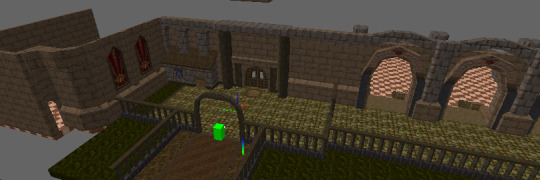
I think that's what really agrees with me in this sort of development. Collaboration is an important skill and I do enjoy it, but when each project is a layered pyramid of asset types and separated bits of work it's less flexible. A pyramid is designed and measured before even starting, then built from the bottom. When so much of the design is done in-engine it's easy to approach developing on these platforms like one would a sketch. Jump right into it, get the shapes out, add detail whenever and wherever. Rarely is it too late to revise, and attempting to bash out a concept is a small enough investment that if it doesn't work it can just be done over. It's sketching out bits of a face, feature by feature, shading whenever the compulsion to hits you even if you haven't even started other parts of the face yet. It's writing a novel instead of making a movie.
0 notes